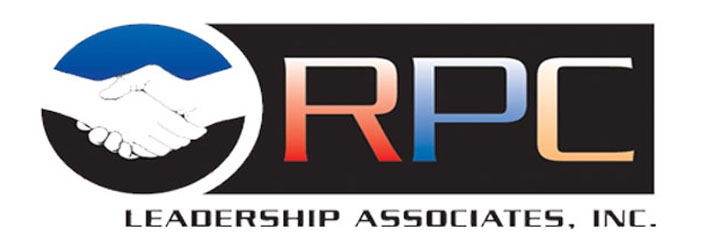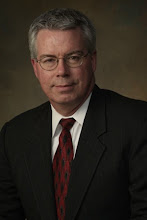…but those who cannot learn, unlearn and relearn.”
This quote from Alvin Toffler, noted author (remember Future Shock?) and futurologist is a great way to put us in the mindset of this month’s topic: Dealing with Change. Aside from being one of my favorite topics to teach and facilitate, it is in my mind, one of the crucial core attributes of successful leadership in today’s dynamic business, political and service environment.
To further set the stage, consider the results of a recent survey by McKinsey & Company of more than 1,600 executives, senior managers and mid-level managers worldwide where they were asked, among other things, about how well they have responded to the current economic crisis. No one doubts the economic crisis represents disruptive change but a significant test of leadership (RPC edition 10/08) as well. In the survey, respondents were asked to rate their level of satisfaction as a business leader in various areas. What caught my eye were 3 specific areas that are telling in the area of leading change in today’s environment. They are (percentages are % very satisfied with performance):
•Retaining, attracting talented people: 35%(C-Suite)/26%(Mid-Mgmt)
•Positioning company for growth: 34%(C-Suite)/27%(Mid-Mgmt)
•Developing people’s leadership capabilities so they can manage crisis: 29%(C-Suite)/ 25%(Mid-Mgmt)
Why do only a third of C-level executives and roughly a quarter of mid-level managers feel they are doing very well in these areas? Why are they struggling with adapting to the changes created through the economic crisis? From my own 30 years of experience, I offer three reasons why this might be the case.
*Wait it out – Embracing a wait it out strategy by definition puts the organization behind their competitors. Forward thinking leaders continue to use the recession as a means to re-evaluate their strategies and re-tool their businesses for the new realities of the business, political and service economy. A wait-and-see leader will only be able to react to the new environment with little leverage to dictate direction like their forward thinking counterparts.
*Unprepared culture – I suspect the organizations that were not very satisfied with their performance in these areas were likely not doing very well in the same areas before the crisis. Their culture likely was not built on a platform of continuous change. By instilling an evolutionary mindset to change in the hearts and minds of the organization, a leader will be in a much better position to make the crucial decisions necessary to embrace the crisis head-on.
*Lack of people skills – Change is an emotional process. Leaders who are not comfortable leading in a culture of accountability, transparency and empathy are doomed to lag behind on their limitations of these crucial people skills. Change cannot be successful without people embracing the change as a positive, a mindset the leader must enable through open and transparent communications.
How are you handling the new realities?
Lead Well.
Rick Lochner
Friday, September 4, 2009
Wednesday, September 2, 2009
Are we there yet?
How many times have we heard that refrain from our children (or maybe from our significant other!?!) when their impatience got the best of them? Or maybe we’ve said it ourselves in different situations for the same reason. In most cases, it is because they don’t have a sense of time or speed relative to setting correct expectations of arrival.
In the business sense, whether for-profit or non-profit, we find ourselves either half way through our operational year or possibly just beginning a new one. We are likely compiling data telling us how well our business has performed over the last 6 months because of that natural halfway or transition point. Or are we? This issue focuses on the all-important role of measurements as a crucial element of effective business alignment. We are talking about not only what we measure on a regular basis, but also how we measure what we do in order to make informed business decisions.
The first place to start is to be clear on what we are capturing and the usefulness of what we capture. There are essentially 4 levels of “stuff” we measure, Data, Information, Knowledge and Wisdom or sometimes referred to as the DIKW Hierarchy. Like many topics in and around leadership, much has been written about these 4 elements so I am going to focus on the salient points of each.
• Data is what we measure directly. It is raw in nature and is the least useful element to making the level of business decisions we need to run our business.
• Information is organized Data. In a practical sense this means we import all the available data into a spreadsheet or database and sort or index the data to make it more useful to making a meaningful business decision.
• Knowledge is Information in context. While Information is useful for many business related decisions, its usefulness is limited without the context around the Information gathered. Knowledge allows us to make informed strategic decisions.
• Wisdom is Knowledge over time. When we apply Knowledge over time we create an environment in which the learning of the organization is exponential due to the richness and usefulness of each decision leading to even more useful outcomes.
So it stands to reason that addressing the Scientific Methodologies in the Business Alignment Model creates an overt means to know if we are capturing the right elements to validate organizational progress. More succinctly, it helps an organization determine if it’s making strategic decisions based on information or knowledge.
As an example, Organization A captured data from expense reduction efforts and compiled the data in a spreadsheet to see if it reduced their expenses to meet a specific target. Organization B also captured data from expense reduction efforts and compiled the data in a spreadsheet in similar fashion. However, organization B will also ensure there were minimal reductions in area critical to its long term Vision and Strategy with the balance coming from less critical parts of the business. Organization A made strategic decisions based on information, potentially crippling their future with across-board-reductions. Organization B made knowledge based strategic decisions and did not lose sight of the contextual impact of their decision. Which organization do you work for?
Lead Well.
Rick Lochner
In the business sense, whether for-profit or non-profit, we find ourselves either half way through our operational year or possibly just beginning a new one. We are likely compiling data telling us how well our business has performed over the last 6 months because of that natural halfway or transition point. Or are we? This issue focuses on the all-important role of measurements as a crucial element of effective business alignment. We are talking about not only what we measure on a regular basis, but also how we measure what we do in order to make informed business decisions.
The first place to start is to be clear on what we are capturing and the usefulness of what we capture. There are essentially 4 levels of “stuff” we measure, Data, Information, Knowledge and Wisdom or sometimes referred to as the DIKW Hierarchy. Like many topics in and around leadership, much has been written about these 4 elements so I am going to focus on the salient points of each.
• Data is what we measure directly. It is raw in nature and is the least useful element to making the level of business decisions we need to run our business.
• Information is organized Data. In a practical sense this means we import all the available data into a spreadsheet or database and sort or index the data to make it more useful to making a meaningful business decision.
• Knowledge is Information in context. While Information is useful for many business related decisions, its usefulness is limited without the context around the Information gathered. Knowledge allows us to make informed strategic decisions.
• Wisdom is Knowledge over time. When we apply Knowledge over time we create an environment in which the learning of the organization is exponential due to the richness and usefulness of each decision leading to even more useful outcomes.
So it stands to reason that addressing the Scientific Methodologies in the Business Alignment Model creates an overt means to know if we are capturing the right elements to validate organizational progress. More succinctly, it helps an organization determine if it’s making strategic decisions based on information or knowledge.
As an example, Organization A captured data from expense reduction efforts and compiled the data in a spreadsheet to see if it reduced their expenses to meet a specific target. Organization B also captured data from expense reduction efforts and compiled the data in a spreadsheet in similar fashion. However, organization B will also ensure there were minimal reductions in area critical to its long term Vision and Strategy with the balance coming from less critical parts of the business. Organization A made strategic decisions based on information, potentially crippling their future with across-board-reductions. Organization B made knowledge based strategic decisions and did not lose sight of the contextual impact of their decision. Which organization do you work for?
Lead Well.
Rick Lochner
Labels:
Business Alignment,
Knowledge,
Leadership,
Measured Success
Subscribe to:
Posts (Atom)

